- Details
- Hits: 979

Tallahassee, Florida. (December 20, 2024): In this photo by Bernd Mai, American Soldiers gather with German families who volunteer to host servicemembers for Christmas celebrations. Local Germans open their hearts and homes to G.I.s who are far from home and in return they receive memories that last a lifetime.
I was one of those lonely Soldiers forty-seven years ago stationed with the combat engineers at Heilbronn, a small city near Stuttgart. My buddy Butch and I signed up for “Operation Good Cheer,” a new program for troops with nowhere to go for Christmas. We were hosted by a marvelous elderly widow who was herself alone for the holidays for the first time. She was kind and gracious (she even used real candles on her tree!) and she patiently explained how Germans celebrate the holiday. We had a traditional meal and left with a warmth I feel to this day. Looking back, I’m pretty sure our visit was as special to our host as it was to us.
Read more: GOD HEALS & GERMANS NOW HOST AMERICAN FRIENDS AT CHRISTMAS
- Details
- Hits: 2849
 “Anyone in any walk of life who is content with mediocrity is untrue to himself and to American tradition.” ~~ General Patton
“Anyone in any walk of life who is content with mediocrity is untrue to himself and to American tradition.” ~~ General Patton
Many conflicting and some untrue stories have been printed about General George S. Patton and the Third Army Prayer. Some have had the tinge of blasphemy and disrespect for the Deity. Even in “War As I Knew It” by General Patton, the footnote on the Prayer by Colonel Paul D. Harkins, Patton’s Deputy Chief of Staff, while containing the elements of a funny story about the General and his Chaplain, is not the true account of the prayer Incident or its sequence.
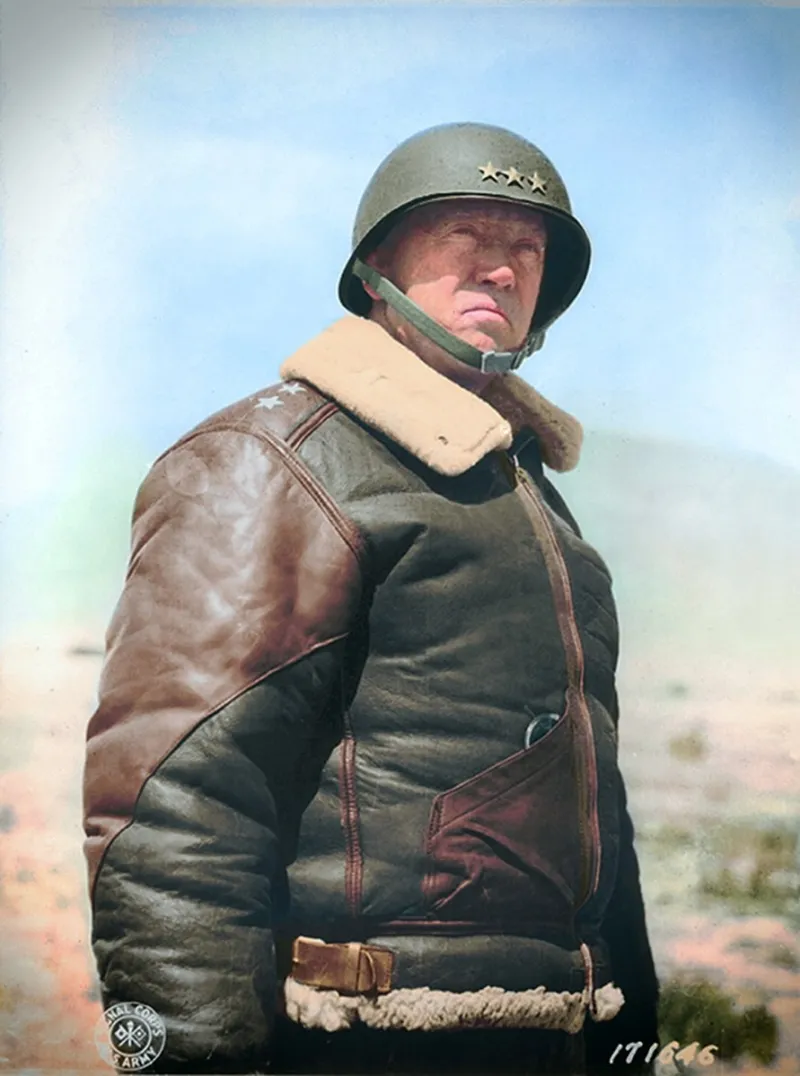 As the Chief Chaplain of the Third Army throughout the five campaigns on the Staff of General Patton, I should have some knowledge of the event because at the direction of General Patton I composed the now world famous Prayer, and wrote Training Letter No. 5, which constitutes an integral, but untold part, of the prayer story. These Incidents, narrated in sequence, should serve to enhance the memory of the man himself, and cause him to be enshrined by generations to come as one of the greatest of our soldiers. He had all the traits of military leadership, fortified by genuine trust in God, intense love of country, and high faith In the American soldier.
As the Chief Chaplain of the Third Army throughout the five campaigns on the Staff of General Patton, I should have some knowledge of the event because at the direction of General Patton I composed the now world famous Prayer, and wrote Training Letter No. 5, which constitutes an integral, but untold part, of the prayer story. These Incidents, narrated in sequence, should serve to enhance the memory of the man himself, and cause him to be enshrined by generations to come as one of the greatest of our soldiers. He had all the traits of military leadership, fortified by genuine trust in God, intense love of country, and high faith In the American soldier.
- Details
- Hits: 1071
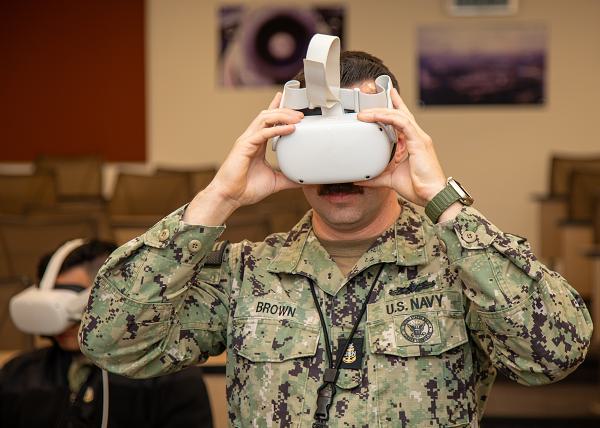
Naval Station Norfolk, Virginia. (December 14, 2024): According to the Pentagon, suicide was the leading cause of death among Army active-duty soldiers from 2014 to 2019 resulting in 883 tragic deaths. Numbers like these have caused all service branches to embrace unconventional ways to reach a young audience. In this photo by Harrison Cox, a Sailor assigned to Mid-Atlantic Regional Maintenance Center evaluates a suicide prevention virtual reality training module using an Oculus headset. There is also an interactive program addressing sexual assault.
The new technology has features young troops are familiar with and it delivers an immersive “experience” versus a traditional lecture-style course. Using artificial intelligence, these interactive programs place the user into various scenarios, often including professional actors, where they directly interact with someone in crisis.
- Details
- Hits: 1992
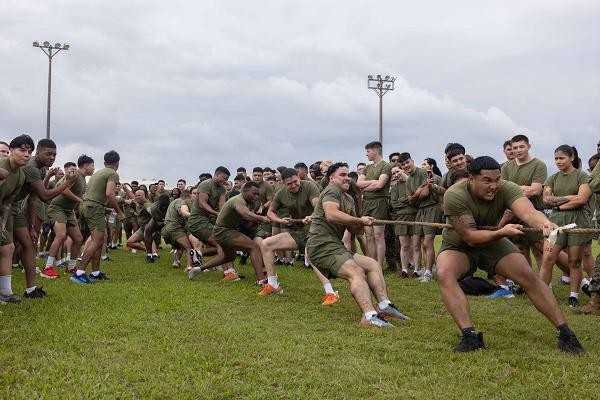
Okinawa, Japan. (December 8, 2024): Who came up with the ridiculous idea of two groups of people on opposite ends of a rope pulling against each other? In this photo by Lance Corporal Aaliyah Hunt, Marines and Sailors compete in a tug-of-war contest, a “game” that dates back centuries.
Historians say the game originates from ancient ceremonies and cults in Egypt, Burma, and India and similar contests appeared in Japan, Korea, Hawaii, and South America. The earliest evidence of the tug of war in Western Europe is around 1000 AD in Scandinavia and Germany in what were called “power games.” Tug of war contests can even be traced to the courts of Chinese Emperors in Mongolia and Turkey.
Today’s tug of war community is serious about the sport and there are rules. Tug-of-war contests are held between two teams of eight competitors and the rope must be forty yards long exactly. The Judge (yes, one is required) issues three commands, “Pick up the rope,” “Take the string,” and finally “Pull.” The contest is decided by the best two out of three pulls.
- Details
- Hits: 2636
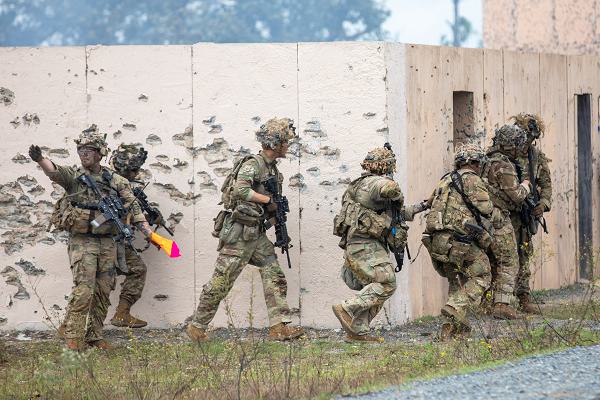
Fort Johnson, Louisiana. (December 13, 2024): Close Quarter Battle or CQB, is when an infantry Soldier gets “up close and personal” with the enemy in brutal, chaotic combat. In this photo by Specialist Isaiah Mount, Soldiers prepare to breach and clear a house during a live-fire exercise at the Joint Readiness Training Center here. The assault team practiced rapidly entering a building using force and momentum to overwhelm any threats inside. The team moves with “controlled aggression” to quickly dominate and clear each room of combatants. It is tough work characterized by sudden violence at close range.
This type of combat has occurred since the beginning of warfare. The ancients used lances or swords in individual combat, Allied Soldiers resorted to bayonets during trench warfare in World War I, and close quarter combat was developed into a science in World War II.
The concept of CQB, also known as Defendu, was a new form of martial arts developed by William E. Fairbairn and Eric A. Sykes, both former British Soldiers and police officials in Shanghai, China prior to World War II. The new tactics involved using firearms to assault structures while minimizing friendly casualties. The program stresses surprise, speed, and controlled violent action with each playing a critical role in the success of an assault.
- Details
- Hits: 1431
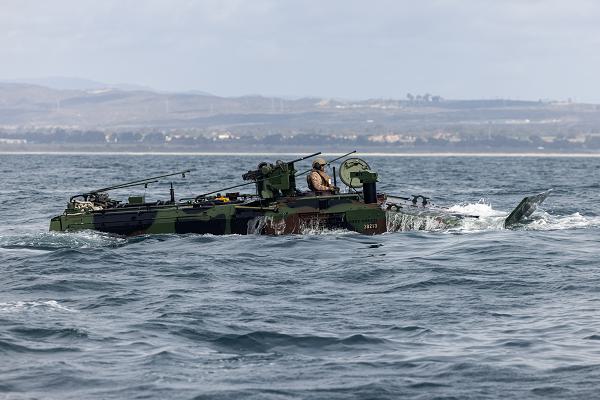
Camp Pendleton, California. (December 9, 2024): After overcoming initial obstacles, the Marine Corps is currently deploying its new Amphibious Combat Vehicle (ACV) to bases in Japan, Guam, and the Philippines. In this photo by Corporal Kyle Chan, a Marine guides this next generation amphibious craft toward shore during exercises with the 1st Marine Division. The ACV deployment is part of an overall refocusing of strategy to confront China in the Indo-Pacific.
Under this new plan, the Marines would rapidly deploy to remote islands to operate in smaller, more dispersed groups. This is a challenging logistical task given the size of the Indo-Pacific. The goal is to field a highly dispersed force capable of conducting amphibious operations independently with the least amount of logistical support.
The new ACV offers greater mobility and has many improvements in fire power and personnel protection. Manufactured by BAE Systems, the ACV is an eight-wheel craft launched and recovered from ships in open water that can carry up to thirteen Marines. The new design has improved survivability with a blast-resistant hull, energy absorbing seats, and an automatic fire suppression system. Its V-shaped frame further reduces the risk to its occupants from mines and improvised explosive devices.


